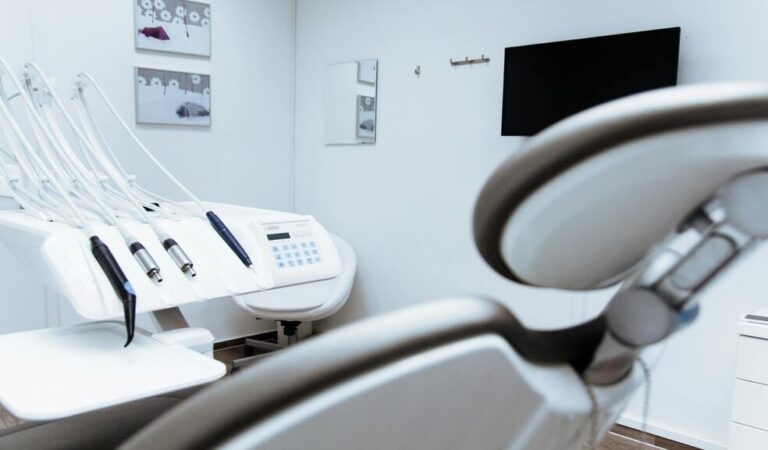Lingual braces are an increasingly popular choice for orthodontic treatment, particularly among adults and teens seeking a more discreet alternative to traditional braces. Unlike conventional braces, lingual braces are placed on the backside of the teeth, making them virtually invisible to others. This article explores the benefits, process, and considerations of choosing lingual braces for orthodontic treatment.
What are Lingual Braces?
Lingual braces function similarly to traditional metal braces, but they are placed on the lingual (tongue) side of the teeth, which faces inward toward the mouth. This positioning makes them a preferred choice for those who wish to maintain a natural appearance during orthodontic treatment.
Components of Lingual Braces
- Brackets: Custom-made brackets are bonded to the back surfaces of each tooth, designed to fit the unique contours of the patient’s teeth.
- Archwires: Wires connect the brackets and apply pressure to move teeth into the desired position over time.
- Elastic Bands: Sometimes used to assist in correcting the bite and aligning teeth properly.
Types of Lingual Braces
- Customized Lingual Braces: These are tailor-made for each patient, providing a precise fit that enhances comfort and effectiveness.
- Self-Ligating Lingual Braces: These braces use a special clip to hold the archwire in place, reducing the need for elastic bands and often resulting in fewer adjustments.
Benefits of Lingual Braces
Aesthetic Appeal
- Invisibility: The primary advantage of lingual braces is their invisibility. Positioned on the back of the teeth, they are hidden from view, making them an ideal option for individuals concerned about their appearance during treatment.
- Confidence: With lingual braces, patients can smile and speak with confidence, knowing that their orthodontic treatment is not visible to others.
Effective Treatment
- Comprehensive Solution: Lingual braces can address a wide range of orthodontic issues, including crowding, spacing, overbites, underbites, and crossbites, providing a comprehensive solution for various dental alignment problems.
- Customization: The custom-fit design ensures that each set of braces is tailored to the patient’s specific needs, enhancing the effectiveness of the treatment.
Comfort and Adaptability
- Custom Design: The brackets are designed to fit the unique shape of each tooth, reducing discomfort and irritation that can occur with traditional braces.
- Gradual Adjustment: Lingual braces apply gentle, continuous pressure, allowing for gradual tooth movement that minimizes discomfort.
The Process of Getting Lingual Braces
Initial Consultation
- Assessment: The orthodontist conducts a thorough examination, including X-rays and impressions of the teeth, to determine if lingual braces are a suitable option.
- Discussion: The orthodontist discusses the patient’s goals and expectations, providing information about the treatment process, duration, and potential outcomes.
Customization and Fitting
- Custom Fabrication: Using advanced technology, the orthodontist creates custom brackets and wires specifically designed to fit the patient’s teeth.
- Bonding: The orthodontist bonds the brackets to the back of the teeth and threads the archwire through them, initiating the alignment process.
Adjustments and Monitoring
- Regular Check-Ups: Patients typically visit the orthodontist every 6 to 8 weeks for adjustments, ensuring that the treatment progresses as planned.
- Monitoring Progress: The orthodontist monitors tooth movement and makes necessary adjustments to the archwire and brackets to guide teeth into their desired positions.
Completion and Retention
- Removal: Once the desired alignment is achieved, the orthodontist removes the lingual braces.
- Retention Phase: Patients are usually provided with a retainer to maintain the new position of their teeth and prevent shifting.
Considerations and Challenges
Speech and Adaptation
- Initial Adjustment: Patients may experience slight changes in speech, such as a lisp, during the initial adjustment period. Most individuals adapt within a few weeks as they become accustomed to the braces.
- Practice: Practicing speaking, reading aloud, and engaging in conversations can help accelerate the adaptation process.
Oral Hygiene
- Diligent Care: Maintaining oral hygiene with lingual braces requires extra diligence, as the positioning of the braces can make cleaning more challenging.
- Tools and Techniques: Special toothbrushes, floss threaders, and interdental brushes are often recommended to ensure thorough cleaning around the brackets and wires.
Cost Considerations
- Higher Costs: Lingual braces tend to be more expensive than traditional braces due to their custom design and complex fitting process.
- Insurance Coverage: Patients should consult with their orthodontist and insurance provider to determine coverage options and potential out-of-pocket expenses.
Who Can Benefit from Lingual Braces?
Lingual braces are suitable for a wide range of patients, but certain factors can influence their effectiveness and suitability:
Ideal Candidates
- Adults and Teens: Those seeking a discreet orthodontic solution often find lingual braces to be an excellent option.
- Complex Cases: Patients with complex orthodontic issues, such as severe crowding or bite problems, can benefit from the comprehensive treatment capabilities of lingual braces.
Considerations for Children
- Age and Development: Lingual braces are generally not recommended for young children, as their teeth and jaws are still developing. Traditional braces or other orthodontic options may be more appropriate for this age group.
Innovations in Lingual Braces
Advancements in orthodontic technology have enhanced the design and effectiveness of lingual braces:
Digital Imaging and 3D Printing
- Precision Design: Digital imaging and 3D printing technology allow for precise customization of brackets and wires, improving comfort and treatment outcomes.
- Efficient Fabrication: These technologies streamline the fabrication process, reducing the time required to create custom components.
Self-Ligating Systems
- Reduced Friction: Self-ligating lingual braces near me use clips instead of elastic bands, reducing friction and allowing for smoother tooth movement.
- Fewer Adjustments: This system often requires fewer adjustments, resulting in more comfortable and convenient treatment for patients.
Conclusion
Lingual braces offer a discreet and effective solution for orthodontic treatment, combining aesthetic appeal with comprehensive alignment capabilities. Their custom design and hidden placement make them an attractive option for individuals seeking a subtle approach to achieving a beautiful, healthy smile. By understanding the benefits, process, and considerations of lingual braces, patients can make informed decisions about their orthodontic care and enjoy the confidence that comes with a well-aligned smile. Whether addressing complex dental issues or simply seeking a more discreet treatment option, lingual braces provide a modern and innovative solution for orthodontic needs.




